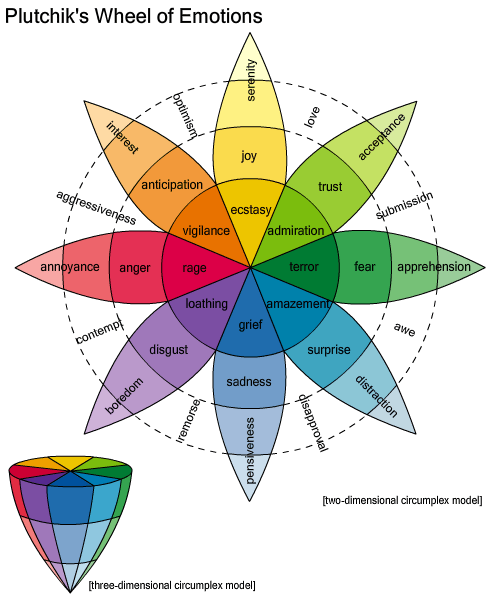The citation method of ranking indexed content is flawed. It is based on human aid, and any technology based on the work of humans is always going to have flaws. Links are the product of what elicits an emotion from website owners, and the link builder that can tap these emotions is going to be able to manipulate the most important element in search rankings.
Emotion Self-Regulation
The concept of emotional self-regulation is defined as:
being able to properly regulate one’s emotions. It is a complex process that involves the initiating, inhibiting, or modulating the following aspects of functioning
The concept is based on being able to understand the following:
1. internal feeling states (i.e. the subjective experience of emotion),
2. emotion-related cognitions (e.g. thought reactions to a situation),
3. emotion-related physiological processes (e.g. heart rate, hormonal, or other physiological reactions), and
4. emotion-related behavior (e.g actions or facial expressions related to emotion).
Broken down; many of our actions are guided by emotions that originally fueled by thoughts brought on by stimuli around us. These actions in turn have results, that often fuel future thoughts, and thus the cycle continues.
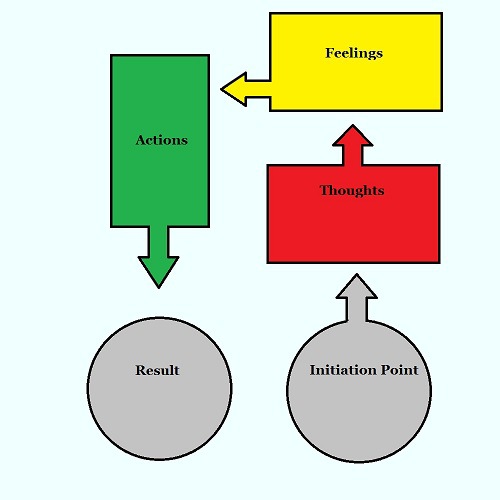
When looking at this concept it is important to also understand the gamut of emotions the human mind deals with. Robert Plutchik defined emotions and their polar opposites through the creation of the following wheel:
Understanding these concepts can unlock a marketers understanding of many actions of a consumer, and the same can be said for the link builder. Linking is an action, and that action can be elicited by many emotions. The most basic of these is the initiation point of the link buy. The thought of someone confronted with an offer to sell a link is “I can monetize this site I have built” and the following emotion is contentment in the material concept of payment, the action is the link. The psychology of someone giving a link can be broken down by this cycle, and by creating quality initiation points that cause Thoughts that cause desired emotions, a link builder can skillfully achieve links for any website.
The Psychology of Link Bait
Joy: A Case Study
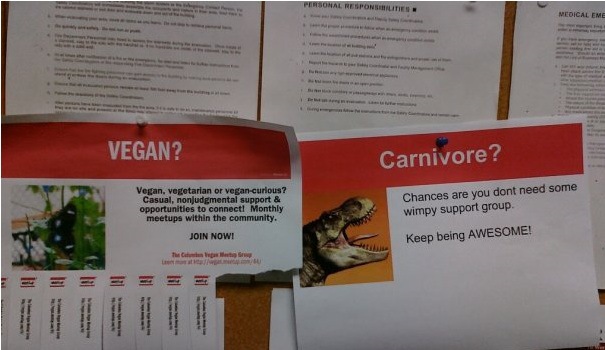
This flickr.com image went viral. The contrasting posters are funny on their own, but combined with the concept that someone had to create the second poster to counter the first, it adds to the humor. Humor elicites joy, and people want to share that joy/humor with others. This caused the image to retain nearly 500 links almost 6 months after it appeared on the Digg.com’s front page.
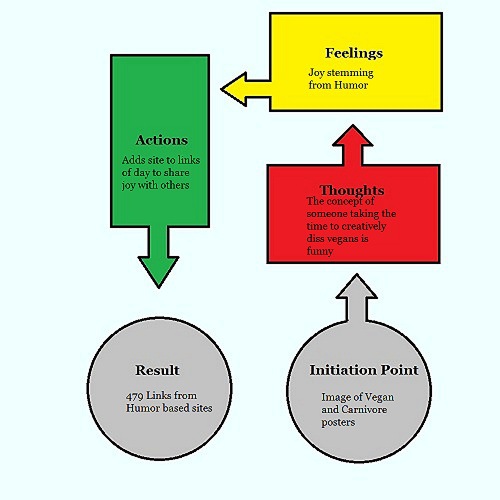
Interest: A Case Study
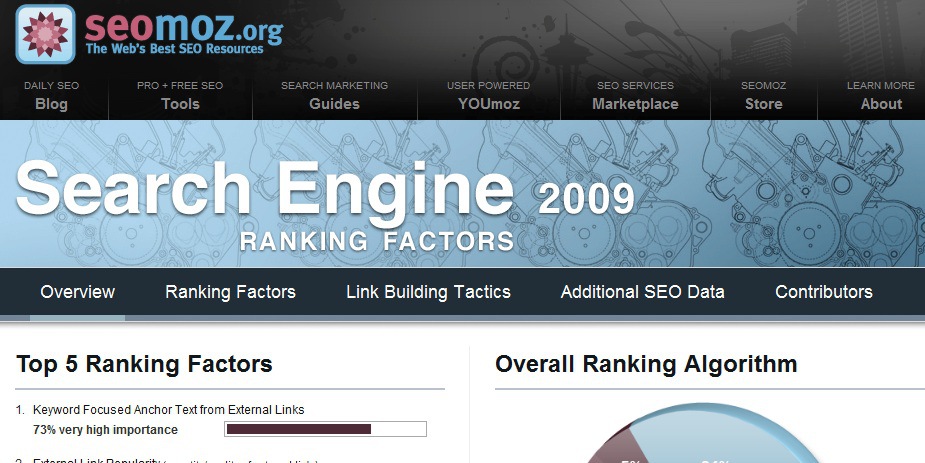
SEOmoz’s Search Ranking Factors is a huge link sponge in our industry. It is an impressive piece of content that evolves. This is often called “resource” based content by link baiters, and resources like any other content bring forth action based on emotion. Search marketers want to know the most important factors to focus on in their campaigns, SEOmoz initiates the thought through this content, the marketer wonders if the factors are the key they are looking for, this elicits interest, and in response they read the factors and share them on social media sites and their blogs.
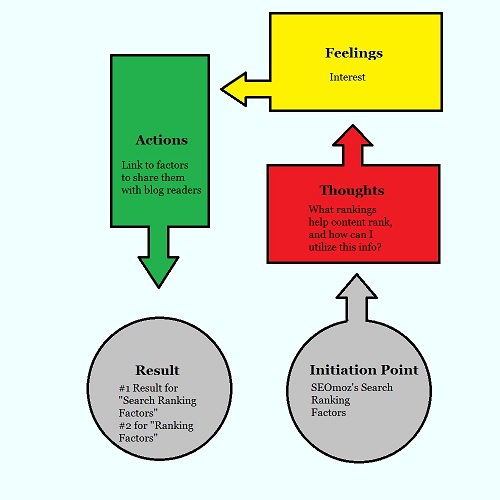
Admiration/Contempt: The Double Edged Case Study
This piece of content is very interesting. That is because depending on political stance your opinion will change, and thus your emotion. Supporters of the healthcare plan in question felt admiration for Barney Frank for standing up to insane comparisons of Obama to Hitler. On the other hand people that did not care for the healthcare legislation felt their contempt for the concept fueled by the woman’s questions. Looking through the backlinks you will see a mixture of supporters and detractors linking.
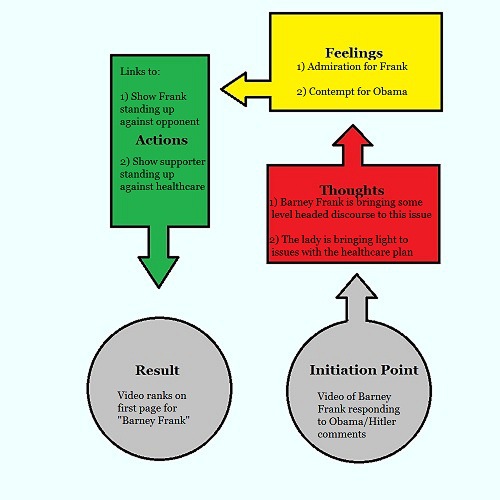
Beyond Link Bait
This concept is why link bait captures links, but it can work for all link building. All that a builder must do is work backwards. The desired result is always a link, the builder must decide what emotion is going to achieve this action from their target, create a targeted thought process that will elicit this emotion, and a piece of content that will bring this thought into the targets mind.

A great current example of this is Invesp’s 100 Most Influential Internet Marketers campaign. Their goal is to get links from the top internet marketers in the industry. In order to get that action they want to elicit an emotion of pride. The thought that brings for this feeling is the marketer realizing “I am regarded as one of the top practitioners at what I do.” The initiation point for this is the campaign itself, and the badge that is given to winners to display their pride in the achievement.
This can work for tactics as basic as begging for links. You want the link, and you know one of the most basic desires for all humans to feel is pride, so you need to make the target think that the compliments you bestow on them are so great that the only way to pay back the swelling of pride they feel is with a link. This can be initiated via email, twitter, or even blog comment.
This is obviously a much lower converting tactic as it is hard to get web owners to think your puckering up is anything more than disingenuous.
The crux of this concept is creating a compelling reason for a website owner to take action to link. So often this is what people jumping into link building lose site of. They look at link achievement like a puzzle, “why would anyone link to me”, you have to create the reason, and put it in front of your target in a manner that leads to their voluntary buy in.



